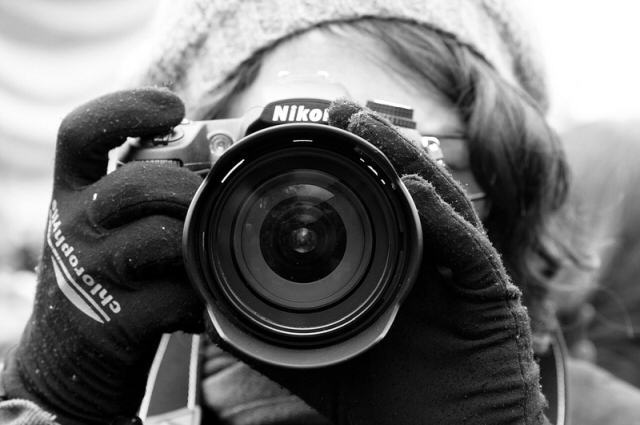HomeStream
News & more!Escapes
My trip reviewsGallery
My travel photosPlanning
Trip planningGuides
Destination guides
Escape Hunter  Planning
Planning  7 Things That Can Ruin Your Travel Photos
7 Things That Can Ruin Your Travel Photos
7 Things That Can Ruin Your Travel Photos
While most are worried about what makes a photo better, many overlook the things that can actually ruin the images.
Travel photography can be a thrilling adventurous ride, but if you're not prepared, you'll never be able to immortalize potentially once in a lifetime events.
Sometimes you only get a few minutes to take the photo of your life... You're at your dream destination and either the light isn't right, dust covers your lens or somthing stands in your way...

Photo credit: Alexis Gravel via Foter.com / CC BY-ND
#1 Strong frontal light
Shoots straight towards you from the direction of your "target". Probably there's nothing worse than this! So, what can be done?
What I do is I quickly go find an object to cover the sun with (or, the other source of light) and stand in such a way that the object covers the light source.
For example: if I get a palm tree or a lamp post to cover the light source, then I can manage to grab a better shot.
But knowing that this can happen, I say it's always better to prevent than to treat the problem.
If a particular attraction is important to me, I look it up on the map and its direction towards the sun. I try to estimate the sun's approximate direction at certain hours.
I then calculate a good time interval to be there (which is usually the afternoon - that's when you have the best light) for taking the best photos.
#2 Strong light from sideways
The sun's glow can radiate all around, so even from the sides it can reduce the quality of your photos.
Other light sources (such as a lamp post) can have a similar effect. Even if to your own eye they're barely noticeable, the camera will feel it.
What can be done? I advise you to use a lens hood and move while attempting to take the photo until the light isn't affecting the image.
The lens hood will reduce the sideways light from interfering at the surface of your lens. Thus, your photos will be clearer, sharper with minimized "unwanted light".
Choose the type of lens hood wisely, as it will influence the outcome. There are conical, cylindrical and petal/rose lens hoods.
I prefer using the petal ones with my 18-105 mm lens. For long ranges it's better to use conical or cyclindrical hoods.
#3 Using a poor quality filter
Although it's advised having a "harmless" UV Filter on to protect the camera's lens from scratches and dust, the "cheap glass" downplays the performance of your high quality lens.
Tremendous work has been put into designing, manufacturing and testing the lens of your camera.
The majority of lens filters are of far interior quality glass. Put the two together and it will definitely influence the outcome, especially when shooting indoor (e.g. in a studio).
I personally keep a UV filter on almost all the time, but suppose I get a warm afternoon light from a very good angle, I will indeed remove the filter from the lens.
My advice: avoid using lenses if not necessary (especially when lighting conditions are good or when you're indoor).
#4 Rain drops, water particles
They're killers... and there's not much to do about them besides shooting from under cover or, shooting in the rain lightning-fast (I just hold my lens up and take a pic, then immediately move the camera downwards).
Don't get fooled: rain drops don't just come from above. Winds will blow the tiny water particles onto your lens even if the camera is held downwards.
Keep your camera facing the ground and your lens cover on. If you have no cover and the rain is not intense, then quickly raise up your machine to grab a fee snapshots. And check/clean your lens after every shot. Pretty much that's all you can do.
#5 People or vehicles obstructing the view
This is like "jamming" photographers and is exremely annoying!
You can't do much about it besides simply staying put and waiting for the horizon to clear. I sometimes wait for long minutes or even an hour or longer only to get the right shot.
Usually I can maintain my patience for a longer period of time, waiting for the "bothering elements" to clear from my view. Usually they do.
If you're willing to take a good picture, then you have to have patience and wait for the clear view.
One more tip: avoid rush-hours, weekends, if a particular spot is that important for you.
#6 Cables "polluting" the view
There's really not much to do about it besides photoshopping them out or, finding the right angle from which they're not covering your target or, at least minimizing the area covered by them on the picture.
A plethora of famous places are beautifully depicted on postcards. But in reality, the places are filled with electric cables... a lot of photoshopping to do!
#7 Dust and sand particles
We all know dust can come from any direction... and if you're on the beach or in the desert, you'll be facing the worst type of particles: they're very fine and sharp - they even get into the interior of lenses.
This is why it's always good to have a filter on. UV filter is most commonly used for this purpose: to shield the lens from dust and sand particles. Otherwise, its influence on the photos won't make much difference besides improving their quality during strong sunlight.
Silicone armour can provide additional protection against tiny particle that can get inside your camera.
It's advised to keep your camera in the bag when in highly dusty environment in order to avoid the tiny dust particles to enter the mechanism of the lens.

About the Author:
Escape Hunter, the young solo traveler in his early 30's explores the World driven by curiosity, thirst for adventure, deep passion for beauty, love for freedom and diversity.
With a nuanced, even humorous approach to travel, an obsession for art and design, Escape Hunter prefers to travel slowly, in order to learn and "soak up" the local atmosphere...
Comments

As "Escape Hunter" - the curious incognito traveler with an insatiable drive to explore, I embark on slow and deep travels around
our beautiful World.
Join me and I will show you exciting destinations
"from within", through my
"escape" trips!

Travel Slang Dictionary
Guide to my personal travel slang vocabulary, which seasons my content...





